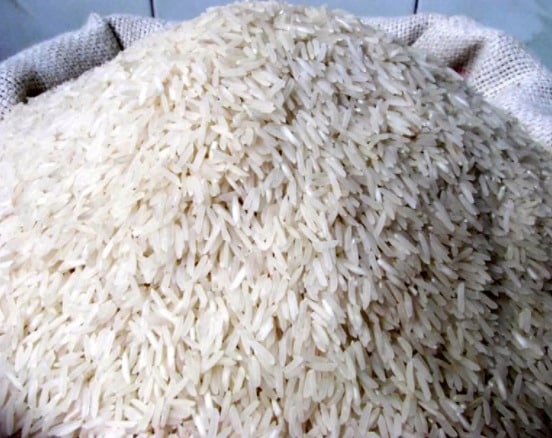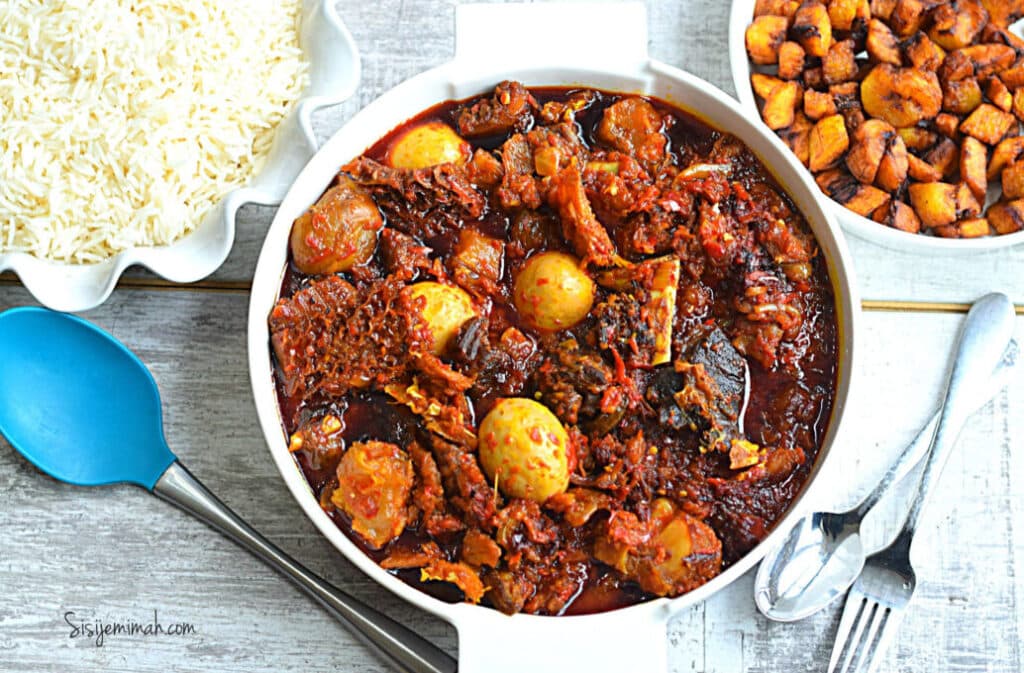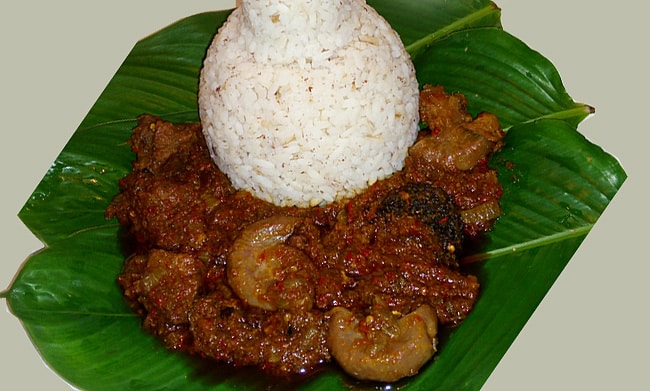Owambe dishes are not created equal. Some of them are regulars at the parties but others require a special call or mention. Ofada rice ranks amongst the latter.
Ofada rice at Owambe na hot cake!
Jollof and fried rice might get all the attention, but you see that rich-looking mound of ofada rice with palm oil stew, deliciously garnished with assorted meat like shaki, pomo, some fish like panla yiyan, locust beans and the main beef? O baxterd!

We really can’t blame the people who fight to get this dish at owambes, because it’s understandable. But with all its incredible qualities, one cannot help but wonder why this dish is treated as the black sheep of the owambe foods family.
Origin of Ofada Rice
Ofada rice is a Yoruba dish. It is the name for an indigenous rice from a small community called Ofada in Obafemi Owode Local Government Area of Ogun state. It is believed that soldiers who returned from the first world war discovered this rice in 1940.
This rice is not your regular type of rice. Once harvested, the rice is soaked for up to a week to ferment, which gives it a distinct aroma when cooked. It is then parboiled and sun-dried before being taken to market.
As brown rice, it is high in fiber and makes a nutritious side dish for any stew, and pairs well with ayamase stew.
Until recently, a lot of Nigerians looked down on ofada rice because of its unrefined nature, as it has brown stripes. The brown stripes are due to their unpolished nature, as it is cultivated without chemicals.

Also, many people tend to avoid ofada rice because of its distinct smell, and because it has to be handpicked to remove stones and particles due to the poor quality of processing by local farmers.
- Jollof rice vs Fried rice: Battle for Owambe supremacy
- Nigerian vs Ghanaian Jollof: The Hilarious and Eternal Rivalry
- The Best Way To Prepare Jollof Rice
Health benefits of Ofada rice
High in fiber
Ofada rice has a higher fiber content when compared to polished white rice. This helps our digestive process by adding bulk to our stool, thereby eliminating constipation, diarrhea, bloating, and excess flatulence.
Low-calorie and gluten-free
Ofada rice can help those who want to lose weight or maintain a healthy weight. When included in a healthy lifestyle, it helps prevent obesity because of its high fiber and nutrient content.
Vitamins & Minerals
Ofada contains higher amounts of vitamins and minerals such as phosphorus, zinc, and folate, which help to nurture our bones. It also contains Vitamins A, C, and E, which have antioxidant properties.
This means they can override harmful molecules, known as free radicals, which are produced within your cells and may cause tissue damage or disease.
SEE: How to cook fried rice one step at a time
Fights diabetes
Due to the cellulose and fiber content of ofada rice, it is recommended for calorie management in health conditions such as diabetes.
Prevents constipation
A healthy digestive system is a good thing. Ofada rice contains a whole lot of dietary fiber which fights constipation, diarrhea, bloating, and other gastrointestinal cancers such as gastric ulcers.
How to prepare Ofada Rice
Preparing Ofada rice requires a lot of patience and concentration, because of the stones. The last thing you want to do while eating is land your teeth on stones.

- Pick out the stones
- Wash the sorted rice with clean water. Ofada rice can be quite dirty so you have to wash it till the water gets clean. Once done, pour the rice into a small pot.
- Put some water in the pot, add salt to taste. Put it on fire and watch it boil.
Easy as 1, 2, 3.
Preparing Ofada stew
Preparing Ofada rice itself is not the issue. There’s almost no difference between cooking Ofada and cooking white rice.
The real deal is in the stew. The stew for Ofada rice is called Ayamase sauce, and originates from Ikenne in Ogun state, Nigeria. Without the stew, ofada rice is just rice with tribal marks.
RELATED: How to Make Moi Moi
Ingredients for the Ayamase Sauce
- Palm oil
- Green bell pepper – (green tatashe)
- Scotch bonnet/habanero pepper – (ata rodo)
- Iru – fermented locust beans
- Assorted meats (you can also use chicken or turkey) – cooked and cut into small pieces
- Beef stock
- Seasoning cube
- 1 large onion (chopped)
- 1 cooking spoon of ground crayfish
- Salt to taste
- Boiled Egg (optional)
Let’s get into it:
- Blend all the pepper and boil till the sauce becomes thick. Remember not to blend the onions with the pepper.
- While the pepper is boiling, cover the pot and bleach the palm oil for 8-10mins. Turn off the heat and cover the pot until the body is warm.
- Once the pot has cooled, put it back on the heat and add chopped onions. Let it fry till it softens, and then add the iru and let both fry until a bubble of palm oil comes up.
- Add the meats stir and let it fry till the oil comes up.
- Add the boiled pepper and stir. Let it fry until oil floats to the top, then add stock, roughly 1 cup, stir, and let it fry until you see oil on top.
- Add ground crayfish (a cooking spoon)
- Stir and let the crayfish cook and combine with the stew. Reduce the heat, and let the stew fry till the oil comes back up again. At this point, you can add boiled eggs/dry fish/cooked ponmo if you wish. Once the oil comes up, taste again for salt and seasoning.

Enjoy it with boiled ofada rice, or if you’re a barbarian, you can eat it with yam or fried plantain.
In conclusion
Ofada rice at Owambe is a staple dish. It is usually served in green leaves; in fact, this is a prerequisite. Ofada has no business coming inside a plate, so if you’re at a Nigerian party and someone serves you ofada in plate, say NO!

No need to thank me. You’re welcome.





